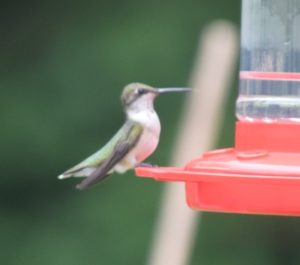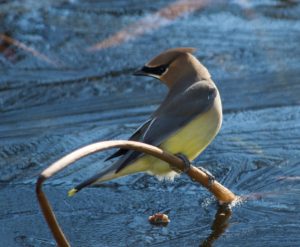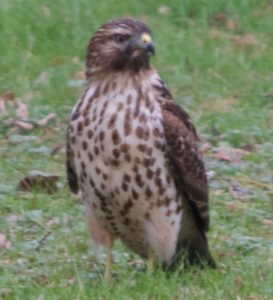Hello Fellow Readers, So much came of last week’s chat with my birder buddies — welcome to more fun bird fodder part 2.
One of the most loved and fascinating backyard birds are Ruby-throated Hummingbirds, who are migratory. As solitary birds, they don’t migrate in flocks. Instead, most make an 18 to 22-hour nonstop flight to travel up to 500 miles to southern Mexico or northern Panama. They fatten up before their trip by fueling themselves with nectar or sugar water from feeders to provide the energy they need to stuff themselves with insects.
Birder buddy Dennis of Blairstown, NJ, used 92 pounds of sugar last season in his twelve feeders beginning the end of July through the third week in August. I’ve joined him during cocktail hour to watch them buzzing around competing for nectar. Talk about entertainment!
Hummingbirds are highly competitive
Mike, my birder buddy from Coatesville, PA, explained that a few pairs of hummingbirds are highly competitive, but clusters in large quantities are less so. I want to think they realize there’s plenty for everyone, but likely there’s too much confusion to argue over things. One chilly morning Mike witnessed a hummingbird feeding upside down. Perhaps the sugar water fermented, and the little fellow was drunk or fell asleep while eating? It turns out the hummer was torpid– a coma-like condition hummingbirds and other species use to protect themselves from the cold. Once the temps rose, the hummer was back to breakfast. Dennis shared a story of a hummingbird caught up in cobwebs. He rescued the little guy and set him on a rock. Seconds later, a fellow hummer came and attacked the weakened bird. Dennis swooped him up and brought him to a feeder to take nourishment; then, he quickly flew off. Talk about the power of lending a helping hand.
Mike, who always has been interested in flying, is enamored by birds’ diverse flight patterns and habitat preferences and uses his observations as a tool to identify species. In the field, Mike accesses an app called I-bird (ibird.com). The Sibley Guide to Birds is a go-to in print. Dennis mentioned E-Bird (ebird.org) by the Cornell Lab of Ornithology and National Audubon Society that provides data sources and a way to record the birds you see to share with others while contributing to science and conservation.
How to attract birds
Bringing Home Nature; How You Can Sustain Wildlife with Native Plants, by Douglas W. Tallamy, includes a handy list of native plants by region and serves as a reliable source to attract more wildlife. One of the native plants Mike added is American Cranberrybush (Viburnum trilobum). About 25 Cedar Waxwings, social fellows with brown and grey tops and yellow bellies, came to feed off the berries in late fall along with Northern Cardinals (Cardinalis cardinalis)and American Robins (Turdus migratorius). When he installed a pond years ago, two mallard ducks christened Mike’s work. He hasn’t seen them since, but the pond has attracted more birds and other wildlife due to the reliable water source. Talk about a bird in the hand are like two in the bush. Garden Dilemmas? Askmarystone@gmail.com
One of my favorite things is “campouts” on the screened porch. Every chance I can get, I love sleeping to the sound of the brook bubbling, peepers peeping, howls from roaming packs of coyotes, and from the wolf preserve nearby. Then there are the early morning wake-up calls of our feathered friends. Dear Curt does not share my enthusiasm. Instead, he prefers white noise such as window air-conditioners, which I find intolerable. It’s genuinely one early bird Curt finds incredibly annoying is loud and repetitive, which I described to birder buddy Mike. He identified the culprit as a Red-shouldered Hawk who sings a loud “kee-aah” repeatedly. The Cornell Lab of Ornithology has a cool tool to hear the sound (link below). Talk about a wake-up call! :^) But what a handsome fellow…
Mike Niven took all the lovely photos of our feathered friends – thank you, Mike!
Link to Cornell Lab of Ornithology, where you can hear the sound of a Red-Shouldered Hawk. And links to I-bird (ibird.com) and E-Bird (ebird.org)
Column updated 6/20/21






